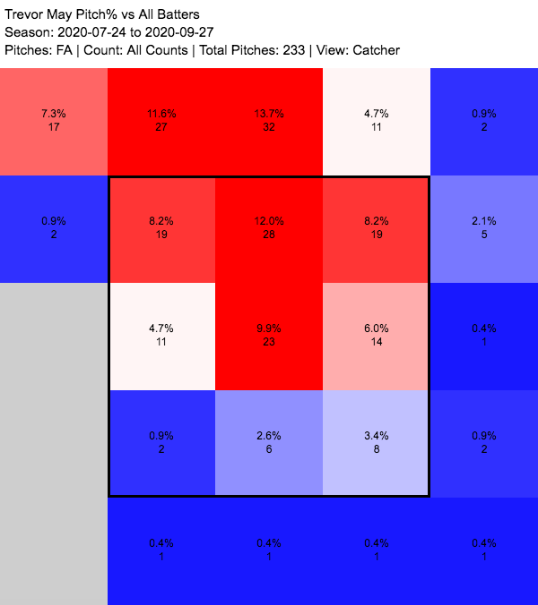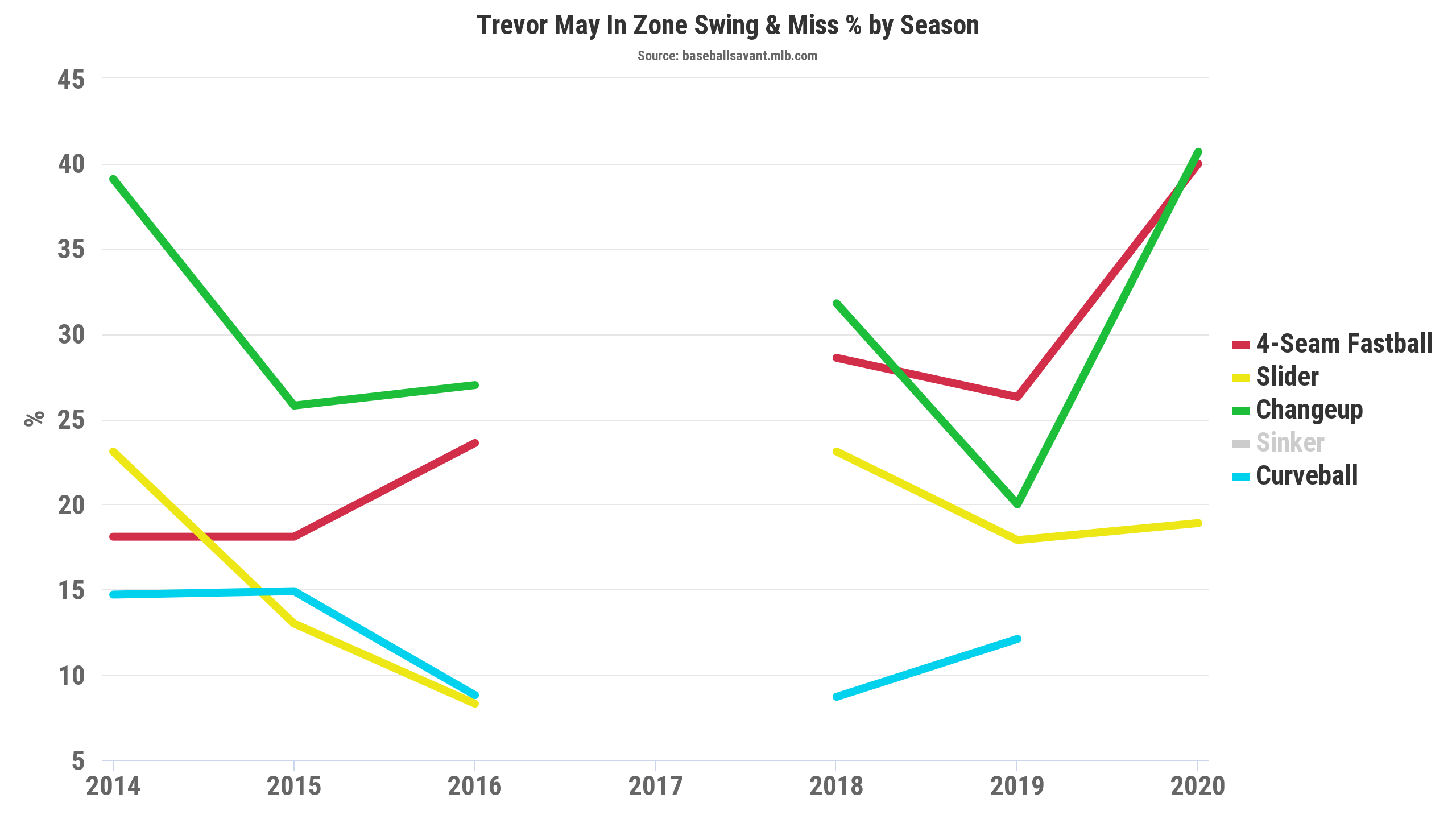Players like David Dahl aren’t supposed to be free agents. He’s a 26-year-old outfielder with an above-average career wRC+, and he’s played just four seasons. He was also a first-round pick with the prospect hype to back that up all the way until his debut. Even though his most recent season was very bad — very, very bad — most years, a team wouldn’t even consider cutting a player like him loose with three years of team control still ahead.
This isn’t most years, though. The Rockies didn’t think the chance that Dahl would bounce back would be worth the meager salary he’d garner in his first arbitration year and elected not to tender him a contract for 2021. It took just nine days for another team to pick up the slack, as late Friday night, the Rangers reportedly signed Dahl to a one-year deal worth $3 million. Because he has only three years and change of service time in the big leagues, you can think of this as a one-year contract with two team options; Texas can keep him through 2023 if it wishes, so long as it picks up his arbitration-year salaries along the way.
That fact boosted the appeal of one of the more head-scratching free-agency cases on the market. Dahl’s 2020 was bad enough — he had a wRC+ of 10 and -0.8 WAR in just 24 games — that a contending team looking to plug a hole in its outfield couldn’t do so by signing him. Any team with playoff aspirations would likely want Dahl to take on a bench role, which would limit him in re-establishing his value. Better would be steady playing time with a rebuilding team, but with so many of those organizations searching for ways to minimize payroll the same way Colorado is, it was unclear who might be willing to pay up.
Enter the Rangers, a fittingly confusing team for a confusing free agent. Texas has been a losing team for four years now, and its road back to contention has always felt rather narrow. Despite this, the Rangers embarked on what Dan Szymborski described as a skinny rebuild — refusing to tear the whole thing down and instead attempting to add modest prospect talent without trading stars while simultaneously spending money on win-now free agents. Some teams, like Milwaukee, have assembled playoff rosters while undergoing similar retoolings. In the case of Texas, the result has been a rotation frighteningly short on depth, a lineup that collectively produced one of the worst seasons ever, and a farm system that doesn’t boast a single prospect in the 55 Future Value tier or higher. All the while, the division around the Rangers is only getting tougher.
Despite the declining product on the field, the last few weeks have seen what looks like a continuation of that strategy. Texas made the obvious sell it needed to, trading Lance Lynn to the White Sox for Dane Dunning and Avery Weems. Then it turned around and traded a Top-100 prospect to Tampa Bay for Nate Lowe. These moves seemingly butt heads in raw buy/sell math, but both fit into a more broad strategy Levi Weaver outlined at The Athletic: Acquire players who are MLB-ready but young enough to still be helping the club when the team’s next crop of prospects mature.
Dahl fits that mold. Despite his years of big league experience, he’s a young player still waiting for his opportunity to break out. It certainly didn’t happen in 2020. He hit .183/.222/.247 with a walk rate on the wrong side of 5% and a strikeout rate approaching 30%. His exit velocity was down nearly three miles per hour from the previous two seasons. He was a poor defender, and he missed time with injuries, just as he has every year of his career. There were just six players in baseball who hurt their teams more than Dahl in 2020, and I’m surprised the number is that high.
If you’re a Rangers fan, you’re probably wondering what the good news is. Fortunately, there are plenty of caveats. This was only a 24-game span we’re talking about, a sample that would take us into the third week of April in a normal regular season. If someone pronounced a player’s career dead after the first 24 games of the year, you would politely shush that person, and maybe urge them to take a walk and get some air.
Dahl’s 24 most recent games also bear little resemblance to his career to that point. He entered 2020 with a career line of .297/.346/.521, a 111 wRC+ and 3.7 WAR. He was a power/speed combo threat who had a knack for posting high batting averages in both the majors and the minors, and he was hardly a liability on defense. In fact, despite center field in Coors being one of the game’s most difficult assignments, both UZR and Statcast’s OAA metric actually prefer Dahl there than in the corners. Prior to 2020, he had done a pretty good job of playing like someone once selected 10th overall in the draft.
But the issues that felled Dahl in 2020 were nothing new. He has always whiffed a lot, and he’s below-average at taking walks. He’s also never stood out much when it comes to Statcast’s exit velocity and hard-hit rate metrics, placing in the 36th percentile in the former and the 51st percentile in the latter in 2019, and those were both career-bests. That isn’t to say Dahl was getting lucky before last year, though his expected numbers do tend to lag behind his actual totals. He just hasn’t shown particularly loud tools to this point.
There’s also the issue of Dahl’s health. He was called up way back in July 2016, opened his big league career with a 17-game hitting streak, and finished the year with a 113 wRC+ in 63 games. Before he could build on that hype the following year, he was diagnosed with a stress reaction in his rib, which caused him to miss the entire 2017 season save for 19 minor league games on rehab assignments. He wouldn’t rejoin the Rockies until late April 2018 and stuck around for only a little more than a month before suffering a broken foot and hitting the shelf for the rest of the year. He managed to log 100 games in 2019 before an ankle sprain once again ended his season prematurely in the first week of August. Following the 2020 season, Dahl elected to receive shoulder surgery, but said he should still be ready for spring training.
It’s difficult to imagine how Dahl’s performance wouldn’t be impacted by such a constant barrage of injuries over these past few years, which is why the Rangers aren’t investing in him because of anything they saw in his horrific 2020 season, or in any of the more successful seasons that preceded it. They’re doing it because they believe none of us have seen what he truly has to offer, and they probably aren’t wrong. Here’s hoping 2021 turns out to be a year of good health — for Dahl, and for all of us.


